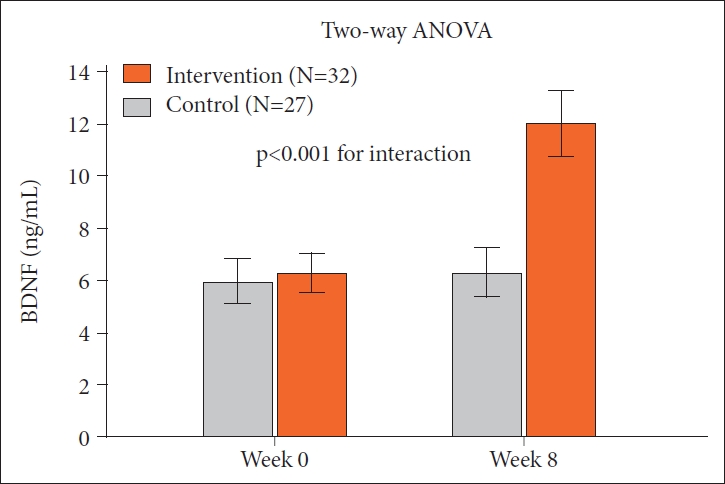 |
 |
- Search
| Psychiatry Investig > Volume 17(12); 2020 > Article |
|
Abstract
Objective
Methods
Results
Supplementary Materials
ACKNOWLEDGEMENTS
The authors have no potential conflicts of interest to disclose.
Author Contributions
Conceptualization: Ta-Chuan Yeh, Chih-Sung Liang. Data curation: Shu-Li Cheng, Ta-Chuan Yeh, Chih-Sung Liang. Formal analysis: Ta-Chuan Yeh, Chih-Sung Liang. Funding acquisition: Shu-Li Cheng. Investigation: Yu-Ting Tseng, Shih-Chieh Ku. Methodology: Fu-Chi Yang, HsuanTe Chu. Project administration: Hsuan-Te Chu, Chia-Kuang Tsai. Resources: Ta-Chuan Yeh, Chih-Sung Liang. Software: Chia-Kuang Tsai. Supervision: Chih-Sung Liang. Validation: Shu-Li Cheng, Fu-Chi Yang, Ta-Chuan Yeh, Chih-Sung Liang. Visualization: Shih-Chieh Ku, Yu-Ting Tseng. WritingŌĆöoriginal draft: Shu-Li Cheng.WritingŌĆöreview & editing: Ta-Chuan Yeh, Chih-Sung Liang.
Figure┬Ā1.

Figure┬Ā2.

Figure┬Ā3.

Table┬Ā1.
Chi-square tests and FisherŌĆÖs exact test were used for categorical variables; independent-sample t-tests were used for continuous variables. BDNF: brain-derived neurotrophic factor, BDI-II: Beck Depression Inventory-II, BMI: body mass index, HF: high frequency, HR: heart rate, LF: low frequency, LF/HF: low/high frequency ratio, MNN: mean of all normal-to-normal interbeat intervals, MRR: mean of RR intervals, RSES: Rosenberg Self-Esteem Scale, TP: total power, VAR: variance of the RR intervals, VLF: very low frequency
Table┬Ā2.
|
Laughter group (N=32) |
Control group (N=27) |
Two-way ANOVAs |
|||||
|---|---|---|---|---|---|---|---|
| Week 0 | Week 8 | Week 0 | Week 8 | Treatment | Group | Treatment*group | |
| BDNF (ng/mL) | 6.3┬▒2 | 12.1┬▒3.4ŌĆĀ | 6┬▒2.1 | 5.5┬▒1.7 | F1,57=40.731 | F1,57=40.336 | F1,57=32.440 |
| p<0.001 | p<0.001 | p<0.001 | |||||
| Cortisol (ng/mL) | 13┬▒3.9 | 13.1┬▒3.1 | 14.3┬▒4 | 14.5┬▒4.4 | F1,57=0.0552 | F1,57=2.234 | F1,57=0.155 |
| p = 0.815 | p=0.138 | p=0.694 | |||||
| BDI-II | 10.5┬▒10.6 | 10.2┬▒6.5 | 10.4┬▒9.2 | 9.4┬▒6.9 | F1,57=0.162 | F1,57=0.0480 | F1,57=0.0268 |
| p=0.688 | p=0.827 | p=0.870 | |||||
| RSES | 22.7┬▒1.8 | 21.4┬▒2.6* | 22.9┬▒2.9 | 21.6┬▒4.2 | F1,57=4.682 | F1,57=0.528 | F1,57=0.212 |
| p=0.033 | p=0.469 | p=0.646 | |||||
| Heart rate variability | |||||||
| ŌĆāHeart rate | 90.7┬▒12.3 | 93.3┬▒13.7 | 88┬▒16.1 | 85.7┬▒11.8 | F1,57=0.0517 | F1,57=3.136 | F1,57=0.594 |
| p=0.821 | p=0.079 | p=0.443 | |||||
| ŌĆāMRR | 712.4┬▒139.9 | 704┬▒97.1 | 738┬▒99.8 | 745.4┬▒120 | F1,57=1.759 | F1,57=9.041 | F1,57=2.048 |
| p=0.187 | p=0.003 | p=0.155 | |||||
| ŌĆāVLF | 4.2┬▒1.5 | 4.4┬▒1.1 | 4.7┬▒1.4 | 4.3┬▒2.2 | F1,57=0.0572 | F1,57=0.491 | F1,57=0.690 |
| p=0.811 | p=0.485 | p=0.408 | |||||
| ŌĆāLF | 2.4┬▒2.2 | 3┬▒1.7* | 3.2┬▒1.6 | 1.8┬▒5.5 | F1,57=1.592 | F1,57=1.508 | F1,57=0.280 |
| p=0.210 | p=0.222 | p=0.598 | |||||
| ŌĆāHF | 2.5┬▒1.9 | 3┬▒1.3 | 3.3┬▒1.6 | 2.6┬▒1.6 | F1,57=0.616 | F1,57=3.415 | F1,57=1.320 |
| p=0.434 | p=0.067 | p=0.253 | |||||
| ŌĆāLF/HF | 1.8┬▒2.6 | 1.4┬▒1.4 | 1.4┬▒1.3 | 3.9┬▒10.4 | F1,57=1.903 | F1,57=1.363 | F1,57=0.790 |
| p=0.170 | p=0.245 | p=0.376 | |||||
| ŌĆāTP | 4.7┬▒1.6 | 5┬▒1.1 | 5.3┬▒1.4 | 5┬▒1.8 | F1,57=0.001 | F1,57=1.182 | F1,57=1.316 |
| p=0.975 | p=0.279 | p=0.254 | |||||
| ŌĆāVAR | 5┬▒1.6 | 5.3┬▒0.9 | 5.4┬▒1.2 | 5.8┬▒1.1 | F1,57=2.856 | F1,57=3.942 | F1,57=0.0319 |
| p=0.094 | p=0.049 | p=0.859 | |||||
| ŌĆāMNN | 403.7┬▒93.3 | 405.3┬▒71.4 | 378.7┬▒63 | 335.1┬▒108.5 | F1,57=1.759 | F1,57=9.041 | F1,57=2.048 |
| p=0.187 | p=0.003 | p=0.155 | |||||
BDNF: brain-derived neurotrophic factor, BDI-II: Beck Depression Inventory-II, BMI: body mass index, HF: high frequency, LF: low frequency, LF/HF: low/high frequency ratio, MNN: mean of all normal-to-normal interbeat intervals, MRR: mean of RR intervals, RSES: Rosenberg Self-Esteem Scale, TP: total power, VAR: variance of the RR intervals, VLF: very low frequency
REFERENCES
- TOOLS







